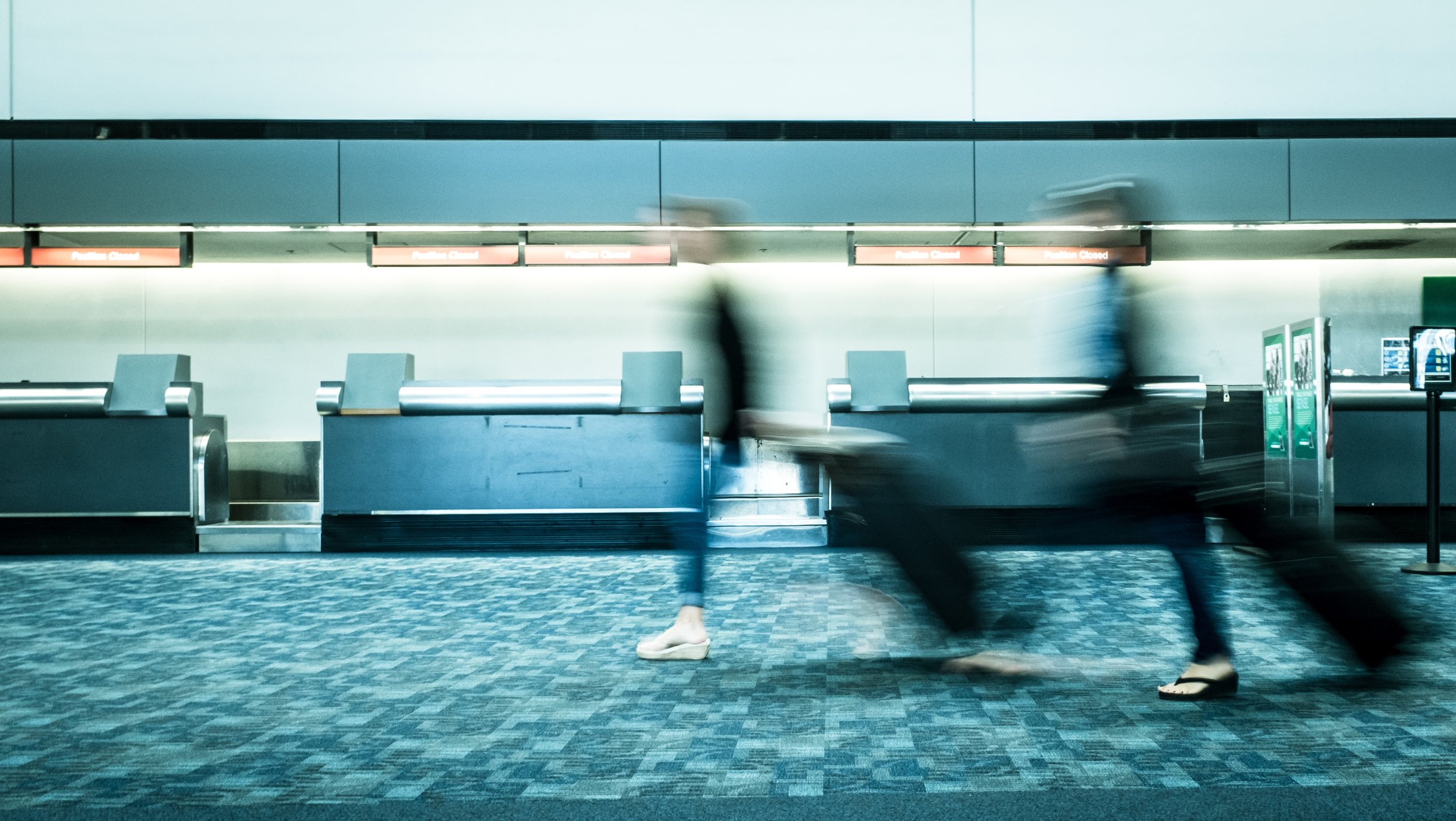Make Your Airport Connection Easier: How To Avoid The Airport Schlep
Make Your Airport Connection Easier: How To Avoid The Airport Schlep
Schlep: verb to haul or carry (something heavy or awkward).
Noun a tedious or difficult journey.
As more and more people are travelling by air these days, security procedures are becoming more and more elaborate, and, unfortunately, it is taking a while for some airports to catch up. The need for clear signage, easy access, and calming space is not always being met. The newer airports, such as Heathrow Terminal 5, were designed with the frequency and abundance of travelers in mind. It is spacious, accommodating to flight connections, and has plenty of places to sit, unwind and prepare for your next flight.
After recently flying through Dublin Airport, I would certainly define it as a schlep. We flew on an overnight flight and landed with about 2 hours to get to our next flight to Carcassonne. After picking up our baggage, checking it in again on another floor, going back down to the first floor and then walking 20 minutes to the other terminal to go through security, we finally arrived at our gate where we were the last to check in and we barely made it! After this experiencing, I’ve put together some tips to help reduce your stress in airports. As there are so many people on the move, it is easy to get swept up into a need to go, go, go, when in reality, what we need to do is slow down, breathe, and take our time.
Here are some tips that will help make your journey easier and more stress free:
Know your airport ahead of time. Once you have booked your flights, go online and look at the map of the airport to learn the layout. It is easy, every airport website has one. Look at what the airport offers in terms of terminal trains, lifts, escalators, and special assistance. If you can, print the map out and bring it with you. There will always be signs in the airport, but if you know ahead of time the general direction of your terminal it will reduce your stress.
Check-in ahead of time. Most airlines allow you to check into your flight 24 hours before your scheduled departure. Look for “online check-in” on the airline’s website, have your booking reference number and passport information ready, and they will guide you through the check-in process. You can print your boarding pass at the time of check in, or wait to do it at the airport when you check your bags.
Give yourself plenty of time. If you are booking a connecting flight, make sure you have at least 2 hours between the flights. If it is a different airline that requires you to retrieve your luggage and check it in again for your next flight, allow yourself more than 2 hours. Between intra-airport walking, lines at check-in and security, and personal needs, such as bathroom breaks and food, the more time you have the better. Also, make sure to get to the airport 3 hours before an international flight. It may seem like a lot of time, but once you have checked in and gone through security, you may only have an hour or so to wait. This will allow you to get to your gate, get a bite to eat, and take care of any last-minute necessities before the flight.
Read the airport signs thoroughly. Often when we feel panicked, in a rush, or have just traveled on an overnight flight, we don’t read signs properly. If you need to stop and figure out where you need to go next, step to the side, take a breath and look around slowly. You should see a sign telling you which direction to go in, whether it be baggage retrieval, gate signs, terminal signs, toilets, or airline check-in. If you still can’t figure it out, ask someone who works at the airport.
Get a baggage cart. If you have more than a carry-on or if you are traveling with a group, it is advisable to get a baggage cart that can carry 3-5 pieces of luggage. Every airport has them and many are free to use. They are easy to push and will help to reduce the schlep. It sometimes can be a long haul to baggage check in; the less on your shoulders the better.
Work as a team to solve problems. If you are traveling in a group, work together to find what you need. Communicate as you go, so that you are all on the same page. One person may see or understand something the other doesn’t. If you disagree, slow down, step aside and look at your itinerary to make sure you all understand where you need to go next.
Organize your carry-on for ideal accessibility. Once you are in the airport, you will be required to show your passport and boarding pass at least 3 times, for check-in, security and boarding. Have a place where your documents will be easy to retrieve, as this will reduce the stress for you and others who may have to wait for you.
Wear comfortable walking shoes. You will be on your feet sometimes up to 2 hours so be prepared and wear broken in, comfortable shoes. The last thing you want at the beginning of your journey is a blister!
Follow the 311 rule for carry-ons. You are permitted to carry on 1 quart-size, clear plastic, zip-top bag holding 3 ounce or smaller containers of liquids or gels. Be prepared to take it out and put it in the security tray when going through security. This is the same for laptops and iPads. Some airports require taking off shoes, belts, etc. so be prepared.
Break up your trip. Spending the night in the first arrival destination after the transatlantic flight can ease up stress and eliminate schlep. The stress of making a connection can put the traveler over the top and there are many budget hotels at major airports, so why not spend the night and help with jet lag?
Travel can be difficult, but keep in mind your destination, and don’t sweat the small stuff. Getting there is part of the journey! Airports are full of interesting people from all over the world. Embrace that, talk to others, allow yourself to be on vacation the minute you get to the airport. Don’t let schlep get the best of you. You will be there soon! Bon voyage!

